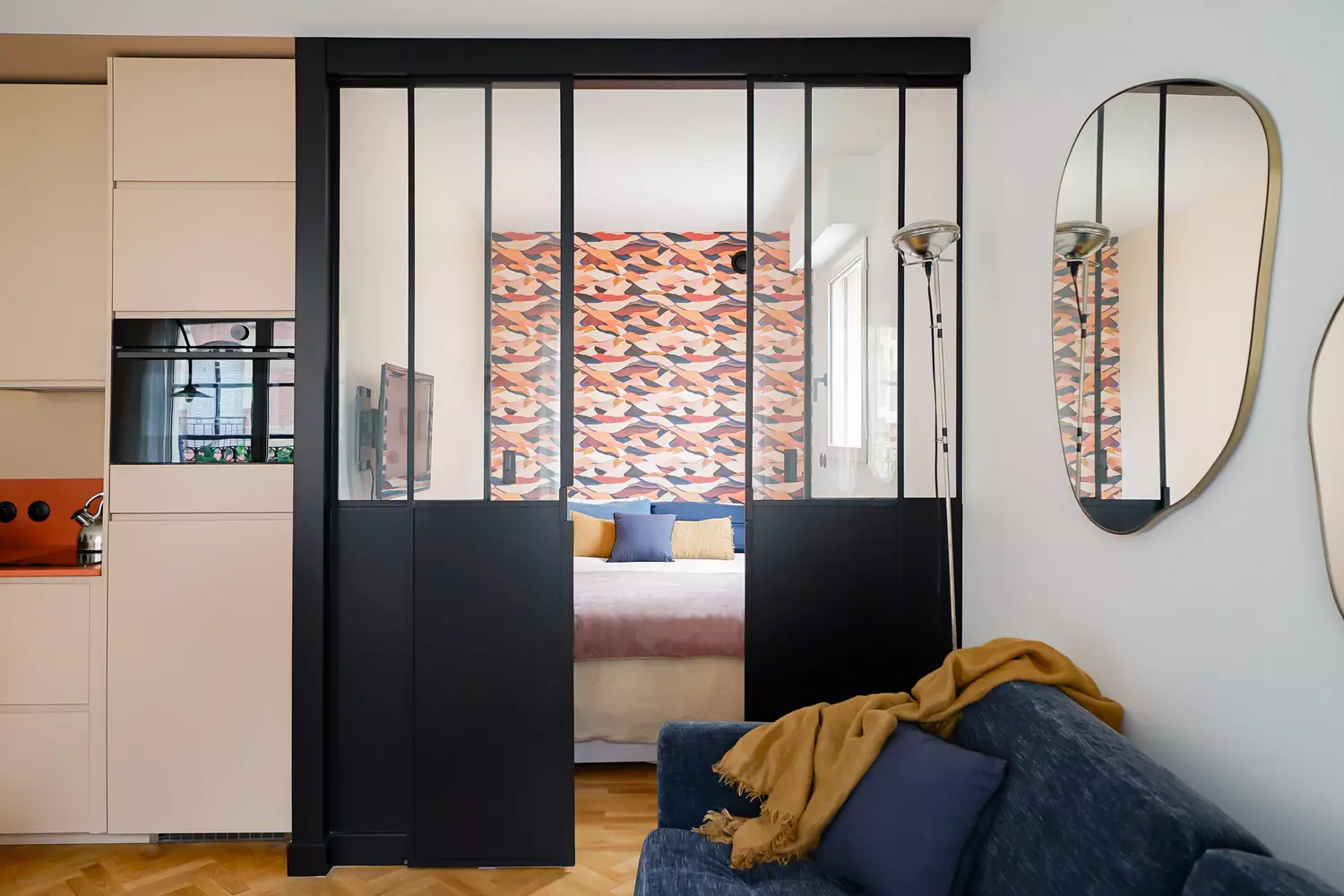Glass partitions have dominated interior design trends for years, but creative professionals are now exploring new approaches to dividing spaces. Modern homeowners are looking for sophisticated alternatives that maintain elegance while offering a unique aesthetic that goes beyond the ubiquitous industrial-style glass walls.
Innovative glass technologies for modern room separation
Contemporary designers are revolutionizing traditional glass partitions creative material applications and artistic interpretations. Textured glass options offer compelling alternatives to standard transparent panels, adding visual interest while preserving the natural flow of light throughout the living space.
Milk glass creates subtle barriers to privacy without completely blocking the lighting, making it ideal for bedrooms or home offices. Smoked glass adds sophisticated drama to modern interiors, while colored glass adds personality and warmth. These variations allow homeowners to retain the light-enhancing benefits of glass while creating more striking visual effects.
Wave-patterned glass and ridged surfaces create fascinating light patterns that change throughout the day, transforming ordinary walls into dynamic architectural elements. Mixed glass compositions that integrate different textures in a single partition offer unlimited customization options for creative interior solutions.
Asymmetrical glass structures break away from traditional rectangular designs and introduce organic shapes that complement contemporary furniture styles. These innovative approaches work particularly well in spaces that require visual correction while maintaining the flow of an open concept.
Revival of glass blocks for modern interiors
Glass blocks are experiencing a remarkable renaissance and are losing their outdated reputation thanks to modern applications and sophisticated laying techniques. These functional elements combine Privacy with translucencyThis makes them perfect for areas that require both separation and lighting.
Contemporary glass block installations are characterized by cleaner lines and more sophisticated patterns than their predecessors. Designers are now incorporating them into minimalist designs, industrial lofts and even traditional homes that want modern updates. Due to its durability, the material is particularly suitable for environments with high humidity such as bathrooms and kitchens.
| Application of glass blocks | Translucency | Data protection level | maintenance |
|---|---|---|---|
| Bathroom partition | High | Excellent | Low |
| Kitchen bar | Moderate | Good | Low |
| Basement window | Good | Excellent | Very low |
Installation flexibility allows for partial walls, accent pieces or complete room dividers. Glass blocks resist moisture, temperature changes and daily wear and tear, making them a practical long-term investment. Their thermal properties also contribute to energy efficiency and help reduce heating costs – a consideration that is becoming increasingly important when evaluating household energy saving measures.
Sculptural screens and artistic room dividers
Decorative screens offer artistic alternatives to traditional partitions, transforming functional elements into stunning focal points. This Sculptural installations Find inspiration from various cultural traditions, including Japanese Shoji panels and Art Deco geometric patterns.
The choice of material has a significant impact on the overall aesthetics and functionality of sculptural partitions. Consider these popular options:
- Wooden umbrellas – Warm, natural appearance to match Scandinavian and rustic styles
- Metal scaffolding – Industrial charm, perfect for loft apartments and modern homes
- Concrete slabs – Bold, architectural statements for contemporary spaces
- Mixed materials – Combination of wood, metal and fabric for unique, individual designs
Custom patterns can include personal preferences, architectural details, or thematic elements that reflect individual lifestyle choices. Some homeowners integrate monitoring technology into smart home systems to control automatic screen positioning based on daily routines.
Weight considerations and structural requirements vary significantly between materials. Proper installation ensures proper support and safety, especially for ceiling or floor-to-ceiling installations. Regular maintenance requirements vary depending on material selection and environmental impact.
Practical considerations for alternative room dividers
When selecting room dividers, soundproofing is a crucial factor, as many decorative alternatives provide minimal acoustic separation. While terracotta screens are visually striking, they offer limited noise reduction compared to solid walls or special acoustic panels.
Budget planning should take into account both the initial installation costs and long-term maintenance needs. Glass alternatives typically require professional installation, while modular screens may allow for self-assembly. When making your final decision, consider ongoing expenses such as cleaning products, replacement parts and possible repairs.
Spatial requirements significantly influence design decisions. Narrow hallways benefit from slim profiles, while open living areas provide space for more extensive installations. Traffic patterns and furniture arrangements must be taken into account to ensure practical functionality in addition to aesthetics.
Just as businesses evaluate operational costs and efficiency measures, homeowners should evaluate both the immediate design impact and long-term satisfaction with the partition solutions they choose.
Environmental factors such as humidity, temperature fluctuations and natural light influence material performance and longevity. Some alternatives work better in certain locations, so professional advice is valuable for optimal results and lasting satisfaction with spatial separation solutions.
